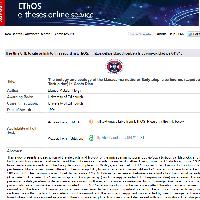Resumen
- This study presents a description of the life cycle and biology of the macadamia nutborer Ecdytolopha torticornis (Meyrick), and identifies factors which influence the abundance of the nutborer in a macadamia orchard in Atirro Farm, Turrialba, Costa Rica, during 1991-1993. Four larval instars were identified. The life cycle was completed in 36 days, and sex ratio of 1:1 was recorded. Fecundity was found to be 37 eggs per female. Macadamia clones differed in their susceptibility to nutborer attack: clones 344 and 246 were more heavily attacked than clones 508 and 660. The maximum level of nut damage was 37%. Nut damage decreased between years and sites. Four larval parasitoids (Apanteles I, Apanteles II, Pristomerus sp. and Ascogaster sp.) and one egg parasitoid (Trichogrammatidae) were reared. Parasitism presented a delayed-density dependence response to nutborer, abundance, as measured by nut damage. Apanteles I accounted for 40% of parasitoids reared, while Ascogaster accounted for 50%. Predation was found to be negatively affect the abundance of larvae in nuts on the ground, and the fire ant, Solenopsis invicta, was considered to be the most important predator. The nutborer preferred to oviposit upon nuts on branches within the first three meters from the ground, and the number of eggs laid was affected by weed management, more eggs were found when husk was applied as a mulch than in unweeded plots. Nitrogen content decreased with nut maturation. The nitrogen and tannin content of different clones were found to have no effect on the abundance of the nutborer. However, proanthocyanidin content and dry matter may affect larval performance. Evidence is given which supports the hypothesis that E. torticornis is a native species rather than an introduced pest. Four factors affect E. torticornis abundance, the quality of its food source, the quantity of the food source, predation and parasitism.
